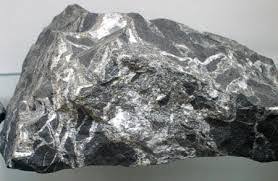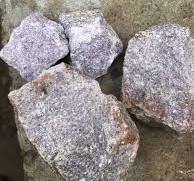Commodity Packaging and Export in Nigeria (Dry Split Ginger, Sesame Seed and Hibiscus Flower); The Feasibility Report.

Until the late 1970’s when hydrocarbon was discovered in commercial quantity in Oloibiri, present day Bayelsa state, Agriculture remained the mainstay of the economy contributing over ninety percent (90%) of the Gross Domestic Product (GDP) of the country as against the less than forty percent (40%) it now contributes with crop production accounting for an estimated eighty-five percent (85%), livestock ten percent (10%) and the balance made up by fisheries and forestry.
Any nation that requires economic development must look inwards to identify areas where it has comparative advantage over other nations and seek to develop the identified areas.
Apart from hydrocarbon, Nigeria has comparative in the Agricultural sector where a variety of products are produced due to the favorable climatic condition, good soil condition and the fact that over seventy percent (70%) of the entire land mass of the country is arable.
Nigeria has comparative advantage in the production ginger, sesame seed and hibiscus flower in Africa over her counterparts due to the large arable land available for production and the conducive climatic condition.
Ginger is well known in many human communities around the world. It is the underground rhizome of a perennial tropical crop called Ginger plant (Zingiberofficinale). Originally, the plant is a native of South Eastern Asia but over centuries has been introduced to various parts of the world like the Caribbean, the Americas and Africa. Presently, the top growers of the crop includes Jamaica, Indonesia, Fiji etc
A mature ginger rhizome is fibrous and has a striated texture. The outer skin of the rhizome is brownish in colour while the inner flesh depending on the variety may be red, yellow or white.
Nigeria is the third largest exporter of ginger in the world after China and India. In the Nigerian market ginger is well known and on high demand even though it is quite expensive.
Most of the dried ginger that are available for international trade are simply sun dried over a few days, but artificial drying is also used in areas lacking a defined dry season to coincide with the harvest.
The rhizomeis dried to between ten to twelve percent (10% – 12%) moisture content. Dried ginger is usually presented in a split or sliced form. Splitting is said to be preferred to slicing, as slicing loses more flavour, but the sliced are easier to grind and this is the predominant form of dried ginger currently in the market.
In Nigeria, harvesting of ginger starts from October and normally continues until April/May. This largely depends on the market situation as ginger can be left on the ground (not harvested) for two years.
Ginger is produced in six states of the Federation namely, Kaduna, Nasarawa, Benue, Niger and Gombe with Kaduna as the major producer. Nigeria’s production in 2005 was estimated at one hundred and ten thousand (110,000) metric tonnes (FAO). In the market, ginger is available in various forms; fresh ginger rhizome, powder ginger and dry ginger rhizome. Out of this, ten percent (10%) is locally consumed as fresh ginger while ninety percent (90%) is dried primarily for the export markets.
Ginger can be processed into a wide variety of products. Many products can be manufactured from ginger like dehydrated ginger, ginger candy, ginger powder, ginger oil and oleoresins and so on. Ginger is an important commercial crop with versatile applications. As condiment, ginger is used for flavoring many food products like tomato sauce or ketchup, salad dressings, meat sausages, gravies, pickles, curry dishes and so on.
It is also used in many medicines as it helps digestion and absorption of food and has antiseptic properties. Ginger based products have wide range of applications in many industries like food processing, pharmaceutical, soft drinks, meat canning, confectionary, tobacco processing, soap making and so on. The demand for the processed products is increasing day by day due to its convenience to handle and use. There are good export prospects as well.
Sesame seeds (or sesamum or benniseed) are the seeds of the tropical annual Sesamumindicum. The species has a long history of cultivation, mostly for its yield of oil.
Based on their colour difference, sesame seed in Nigeria can be classified into two (2) types namely the white/raw and black/mixed.
The white varieties are usually regarded as the food grade and used in the bakery industry while the black varieties are referred to as oil grade and used in the production of sesame oil. The White (Food Grade) seed is grown around the towns of Keffi, Lafia/Makurdi, Doma, and in Nassarawa, Taraba, and Benue States.
Sesame seeds are one of the highly sought-after cash crops in Nigeria. It is second to cocoa in terms of export value. In fact, 90% of the sesame seed produced in the country is exported abroad.
Sesame oil which is extracted from the seeds is useful in the cosmetic industries for producing body lotions and creams. This oil is also used in the production of canned sardine, corned beef, margarine and soaps. It is also in high demand in bakeries, confectioneries, paint and pharmaceutical industries. Additionally, the by-products of sesame seeds can be used to make animal feeds.
Globally, over four million, eight hundred thousand (4,800,000) tonnes of sesame seeds are produced annually. Nigeria has the capacity to meet this production rate yet the country produces just a little over three hundred thousand (300, 000) tonnes annually. This volume makes Nigeria the second largest producer of sesame seeds in Africa and the seventh in the world.
Currently, there are twenty-six (26) sesame-growing states in Nigeria; some of these include Ebonyi, Delta, Jigawa, Bauchi, Nassarawa, Benue and Taraba. The market for sesame seeds is quite vast with Japan and China as the major importers of these seeds. Countries like Turkey, India, Poland and Netherlands have also traded with Nigeria in the past.
Hibiscus (or bissap, as it is called in Senegal) is a valuable and versatile crop whose brightly coloured, star-shaped flowers are prized for their tart flavor, and can be made into a long list of by-products. Hibiscus jellies, jams, fruit pastes, traditional medicines, teas, syrups and refreshing drinks can be found in almost every market stall in West Africa. These beautiful flowers have a high concentration of vitamin C and have been proven to medically reduce high blood pressure.
Hibiscus (or bissap, as it is called in Senegal) is a valuable and versatile crop whose brightly coloured, star-shaped flowers are prized for their tart flavor, and can be made into a long list of by-products. Hibiscus jellies, jams, fruit pastes, traditional medicines, teas, syrups and refreshing drinks can be found in almost every market stall in West Africa. These beautiful flowers have a high concentration of vitamin C and have been proven to medically reduce high blood pressure.
Hibiscus flowers are multi colored and varied. About 200 species of hibiscus are known to exist, and each species has its own unique kind of flower. Hibiscus flowers are alternate, ovate to lanceolate leafs, often with a toothed or lobed margin.
The flowers are large, conspicuous, trumpet-shaped, with five or more petals, color from white to pink, red, orange, purple or yellow, and from 4–18 cm broad. Flower color in certain species, such as H. mutabilis and H. tiliaceus, changes with age. The fruit is a dry five-lobed capsule, containing several seeds in each lobe, which are released when the capsule dehisces (splits open) at maturity. It is of red and white colours.
In Nigeria, Hibiscus flower grows nearly throughout the year, though its peak production is during the dry season of November to April of the following year.
Dried hibiscus flower is used in the production of hibiscus tea. Hibiscus tea is a caffeine free herbal tea from a special type of hibiscus, called roselle, the scientific name is Hibiscus sabdarrifa. Specifically, the tea is made out of the dried fruit part of Roselle, called calyx. It is in red color and tastes like berries.
Hibiscus is perhaps most commonly known for its use as a decorative flower, with its characteristic dark red petals and mild fragrance. In addition, the tropical plant is celebrated for its medicinal properties, and has recently seen an increase in demand worldwide. A potent extract derived from the flower can be used to make a tart tasting tea, which has good antioxidant properties, and may play a role maintaining good health.
This report seeks to examine the financial viability or otherwise of packaging and exporting dry split ginger, dry hibiscus flower and sesame seed from Nigeria.
Table of Contents
EXECUTIVE SUMMARY 1.0 Business Overview 1.1 Description of the Business 1.2 Vision and Mission Statement 1.3 Business Objective 1.4 Critical Success Factor of the Business 1.5Current Status of Business 1.6 Description of the Business Industry 1.7 Contribution to Local and National Economy 2. Marketing Plan 2.1 Description of product 2.2 Product Packaging and delivery 2.3 The Opportunity 2.4 Pricing Strategy 2.5 Target Market 2.6 Distribution and Delivery Strategy 2.7 Promotional Strategy 2.8 Competition 3. Technical Analysis 3.1 Description of the Location 3.2 Raw Materials 3.3 Production Process 3.3.1 Pre-Export Documentations in Nigeria 3.3.2 Post-Export Documentations (Exchange Control Documents) 3.4 Production Cost 3.5 Stock Control Process 3.6 Pre-Operating activities and expenses 3.6.1 Operating activities and expenses 3.7 Project Implementation Schedule 4.0 Organizational and Management Plan 4.1 Ownership of the business 4.2 Profile of the promoters 4.3 Key Management Staff 4.3.2 Management Support Units 4.4 Details of salary schedule 5. Financial Plan 5.1 Financial Assumption 5.2 Start – Up Capital Estimation 5.3 Source of Capital 5.4 Security of Loan 5.5 Loan Repayment Plan 5.6. Profit and Loss Account 5.7 Cash Flow Analysis 5.8 Viability Analysis 6.0 Business Risk and mitigation factor 6.1 Business Risks 6.2 SWOT Analysis
Project Specification:
Additional Info
Get this Report
Direct bank transfer
To order the report, Please do pay the sum of ₦30,000 into
Account Name : Foraminifera Market Research Ltd
Account Number : 274 20 569 37
Account Name : Foraminifera Market Research Ltd
Account Number : 101 76 603 95
Account Name : Foraminifera Ventures
Account Number : 011 66 066 32
Make your payment directly into our bank account. Please use your Order ID as the payment reference. Your order will not be shipped until the funds have cleared in our account.
Instructions
After payment call us on 01 -29 52 413 / 08033782777 or email us at foraminiferamarketresearch@yahoo.com with the payment details. After payment confirmation, the soft copy of the report would be sent to you within 24 hours.



